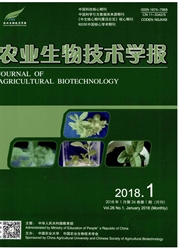

 中文摘要:
中文摘要:
VQ蛋白是一类与生长发育以及响应外界环境胁迫等功能相关的植物特异性转录调控辅助因子,其氨基酸序列仅在VQ结构域:"Fxxx VQx LTG"(其中x代表任意氨基酸)处高度保守,而其他位置的序列则相对多变。大部分VQ蛋白分布在细胞核中,仅有少部分分布于细胞质或者线粒体中。另外,基因特征分析发现,超过80%的VQ基因不含有内含子。对其生物学功能的研究发现,VQ蛋白不仅参与种子、下胚轴、花、叶等器官的生长发育,而且还参与对干旱、盐、温度以及病原菌的胁迫应答。本文综述了近年来国内外关于VQ基因的研究进展,主要包括VQ的蛋白、基因特征,功能及作用机制,以期为VQ蛋白的进一步研究和利用提供一些有益的启发。
 英文摘要:
英文摘要:
VQ protein family is a plant-specific transcription regulation cofactor, which plays an important role in regulation of plant growth, development and responses to various external environment stresses and it is named after the invariant valine-glutamine(VQ) dipeptide. SIB1(sigma factor binding protein 1) was the first VQ protein that found from Arabidopsis thaliana in 2002. Subsequently, VQ multi-gene families had been identified in Arabidopsis thaliana, rice(Oryza sativa), soybean(Glycine max), grape(Vitis vinifera), Chinese cabbage(Brassica rapa), maize(Zea mays) and so on. The analyses of protein characteristic show VQ proteins contain a highly conserved VQ domain ’Fxxx VQx LTG’(where x is any residue), however, the amino acid sequences of other regions have diversity. In addition, basing on the difference of L and G residues, VQ domains of different plant VQ proteins could further have been divided into different types. For example, there are six(LTG, LTS, LTD, FTG, VTG and YTG) and four(LTG, VTG, FTG and ITG) types of VQ proteins in Arabidopsis thaliana and rice, respectively. Further results indicate more than 80% VQ proteins contain 300 amino acids or less and most proteins are localized in the nucleus. The analyses of gene structure display more than 80% VQ genes have no intron. Furthermore, VQ genes are dispersedly distributed on all chromosomes of plants except for several chromosomes of soybean and grape. The researches of VQ gene functions show that not only they participate in regulating the growth and development of seed, hypocotyl, flower and leaf, butalso play an important role in response to the stresses of drought, salt, temperature and pathogen. For example,in Arabidopsis VQ genes, over-expression of VQ8, VQ10, VQ17, VQ18 and VQ22 inhibited plant growth; vq14 mutant cause the production of small seeds; over-expression of VQ29 influence the length of hypocotyls and flowering time; VQ9 and VQ15 impact plant response to high salt and osmotic stresses and
 同期刊论文项目
同期刊论文项目
 同项目期刊论文
同项目期刊论文
 期刊信息
期刊信息
